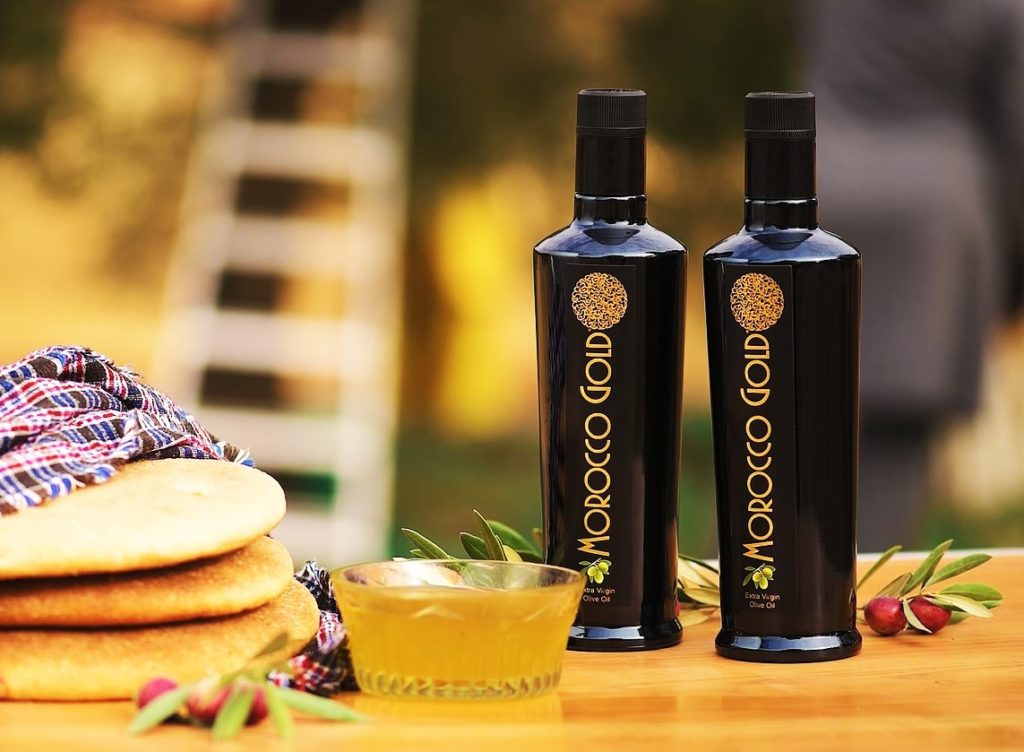A Quick Guide To Choosing The Best Olive Oil For 2025

Summary
- In a very busy marketplace, it’s important to choose the best quality olive oil for your budget.
- Using a few simple checks will ensure you select a high-quality extra virgin olive oil
- Get 2025 off to a healthy start by investing in a quality olive oil.
Contents
How to Choose the Best Quality Olive Oil for the New Year
Thinking about elevating your cooking game in the new year? It all starts with the right ingredients, and high-quality olive oil is one of the most versatile and essential staples in any kitchen.
From drizzling over your salad to sautéing vegetables, high-quality olive oil makes a world of difference—not just in flavor but also in health benefits.
Here’s a simple guide to help foodies, health enthusiasts, and home cooks like you choose the best olive oil for your kitchen.
1. Always Read the Label on Your Olive Oil
The first step in selecting quality olive oil is taking a closer look at the label. This might seem mundane, but labels reveal a lot about what’s inside the bottle:
- Harvest Date: Look for a recent harvest date. Olive oil is best within a year of production as its flavor and quality degrade over time.
- Origin: Check where the olives were grown and where they were pressed. For the highest quality, choose oil sourced from one specific region or country rather than “blended” oils from multiple places.
- At Morocco Gold, we ensure all of our labelling information is clear and transparent, including information on polyphenols, which are a vital component in delivering the health benefits associated with a high-quality extra virgin olive oil.
- Usually extra virgin olive oil will have phrases like ‘cold-pressed’ or ‘first cold pressed extra virgin olive oil’ labelled on the bottle, indicating that a chemical-free process was used in its extraction. Taking extra time to read the label ensures you get the best extra virgin olive oil for your culinary needs!
- To be classified as extra virgin olive oil, the acidity level must be below 0.8%, with no taste defects. In practice, the best extra virgin olive oils have significantly lower acidity levels. For example, Morocco Gold extra virgin olive oil consistently remains below 0.5%, typically averaging around 0.25% to 0.3%, depending on weather conditions throughout the growing season. Unlike other oils, extra virgin olive oil is completely natural and undergoes no chemical treatment or alterations in temperature. That is why our label includes the words ‘obtained directly from olives and solely by mechanical means’ – also – ‘pressed within 24 hours at temperatures below 27 degrees’.
2. Make Sure to Choose Extra Virgin Olive Oil
If you’re serious about flavor and health, opt for Extra Virgin Olive Oil (EVOO). EVOO is the highest grade of olive oil, extracted through cold-press methods without the use of heat or chemicals. Why should you choose Extra Virgin?
- It retains more of the natural antioxidants and heart-healthy compounds.
- EVOO has a robust and complex flavor profile, perfect for enhancing your dishes.
Other types of olive oil, like “regular” olive oil or “light” olive oil, are refined and stripped of nutrients and flavor. When in doubt, always go Extra Virgin.
According to a recent Tasting Table summary of five ways to tell if your olive oil is the real deal, opting for ‘extra virgin’ is critical. They explain:
Out of all of our advice, this one is the most obvious but not necessarily something you’ve considered without knowing how prevalent inferior olive oil is. Some bottles may try to get away with creative terminology, like “pure olive oil” or “extra light olive oil.” While these words have a positive connotation and convey a light, airy breeze of the Mediterranean, they’re still not really describing what’s in the bottle, which is most likely not extra virgin olive oil. The title “extra virgin” is technically only given out by the International Olive Council (IOC), the U.S. Department of Agriculture (USDA), or whichever governing body has this power where the olive oil is made, but these regulations can be circumvented.
The reason most kitchens have at least one if not two bottles of extra virgin olive oil is because it’s considered to be a refined olive oil, aka the highest quality grade of olive oil out there. Extra virgin olive oil is made by cold pressing olives and extracting their lovely golden juices. Cold pressing is done without using heat or chemicals, so you get the purest extraction from the olives. This cold press process ensures that oil isn’t stripped of its antioxidants, vitamins, and minerals, which results in a more flavorful, healthier oil.
3. Opt For Dark-Colored Bottles
Believe it or not, the packaging matters just as much as what’s inside when it comes to olive oil. High-quality olive oil is sensitive to light and heat, which can degrade the flavor and quality over time. This is why top-notch producers package their oils in dark-colored bottles.
- Look for dark glass or opaque tins—they help block UV light exposure.
- Store olive oil in a cool, dark place at home to maintain its freshness.
Pro tip: If you find olive oil in clear bottles, it might already be compromised unless it’s stored in a box or in low-light conditions.
4. Listen to Your Senses When Choosing Extra Virgin Olive Oil
One of the surest ways to judge an olive oil’s quality is to use your senses. High-quality olive oil has distinct sensory characteristics that set it apart from the rest. Here’s how you can tell if it’s the real deal:
- Taste: A fresh, good olive oil will usually have a fruity and peppery flavor with a slight bitterness (a sign of healthy antioxidants).
- Smell: It should have a fresh aroma, reminiscent of grass, herbs, or ripe olives—not stale or rancid odors.
- Color: While color isn’t the ultimate indicator, good olive oil generally ranges from golden yellow to bright green depending on the type of olive and its maturity.
If you taste-test olive oil and it feels flat, greasy, or flavorless, it’s probably not the high-quality option you want.
Tasting Table agree on this point, saying:
Having a little bit of bite to your olive oil indicates that fresh olives were used for cold pressing. Finally, pungency gives olive oil a somewhat peppery quality. If you feel a slight itch or tickle at the back of your throat after eating a food, that’s pungency. These three positive attributes are what the third-party certifiers are looking for in olive oil, but they’re also checking to make sure there aren’t any negative attributes either. If you taste test your extra virgin olive oil, you want to make sure you don’t sense any of the these negative attributes, and for more taste-test direction, the IOC has a list of six fusty or muddy, musty, winey-vinegary, acid-sour, rancid, or frost-bitten olives that give off a “wet wood” taste.
